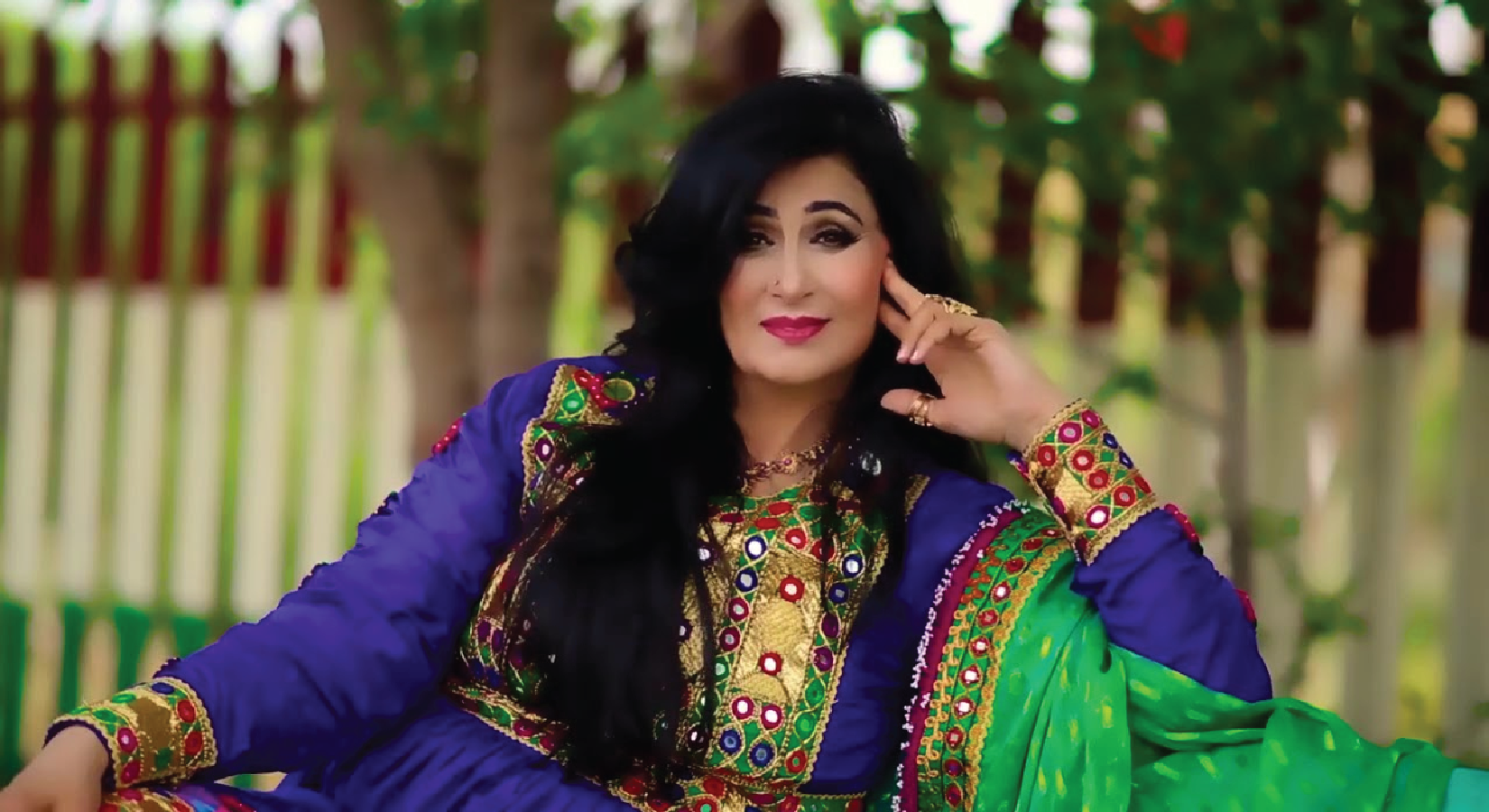
Article by
With her great skill and ability, Naghma proved to be a trailblazer and torch bearer in the history of Afghan music. Naghma’s birthday fell on the 1st of January, 1964. She has turned 60 this year. As a young woman, she has decided to be in the world of arts, particularly performing art and by learning music from Mangal, a musician from Laghman and her ex –husband, she found the most noted family of musician---it could not be imagined that she would live a life away from music. Being the daughter of Bibi Mashala, it must be difficult for her to carve her own identity. Though her mother did not like her to be a singer, she did not object to it openly and allowed Naghma to decide her future. In the beginning she was not alone as she was joined by her husband Mangal and both were destined to carve a place for themselves in a world that was totally new to them.
Naghma was known to the wider public when she started to appear in popular films. This medium had an unprecedented outreach and it had been matched by television channels both terrestrial and satellite. Naghma began her career from school, making a girls band and performing as a vocalist.
In 1992, amidst Afghanistan's civil war, Naghma sought new opportunities abroad, where she captivated an audience unaware of her remarkable past. In Afghan culture, daughters traditionally become wives and mothers, making her pursuit of a music career a radical departure. This choice faced opposition, as arts were taboo for observant Muslim women of noble birth, challenging gender norms deeply rooted in male dominance.
Raised in Kabul by her uncle after her father's death at five, Naghma embraced a life in music. Her folk songs, rich in tradition and authenticity, stood out among peers. Unlike contemporaries, her music resonated with audiences seeking genuine folk expressions. Folk music's informal nature distinguishes it from classical forms, emphasizing unique, authentic flavors. Naghma's journey defied societal expectations, symbolizing resilience amid adversity.
It is usually the area that one hails from that determines the ang of singing. Since Naghma was born around the region of Qandahar the region had a distinct coloration both in pronunciation of words as well as the sur was intoned. The lyrics that she sang were in the same poetic tradition as well as pronunciation of Dari and Pashto dialect. It seemed far more authentic than the songs of other vocalists who have fused their music with contemporary instrumentation and lyrics that speak of current reality rather than something that is more steeped in tradition.
She started her career in the 1980s after seeking some guidance from Mangal, her ex-husband and she was one of the major beneficiaries of the cassette revolution that made music accessible to a large number of people .These cassettes were easy to handle and did not demand a great deal of maintenance. They were cheap and could be played on machines which did not need power connection.These battery or dry battery contraptions were also portable and people could carry them wherever they wanted.
Naghma and Mangal were the biggest beneficiaries of the cassette revolution.They developed a sizable fan club in urban areas of Afghanistan, Tajikistan, Pakistan, and the US. Organizers were skeptical whether urban audiences would attend Naghma's performances, but large crowds came once they knew she was performing. People made fervent requests for specific numbers, being familiar with her music.
It was the sheer popularity of the likes of Naghma that they were considered later to be worthwhile in whatever they were doing. And this kind of music in recorded form was able to match the popularity of film Music during the 80s and 90s. The opening of various radio stations in Kabul and Peshawar and later the regional channel under Kabul Television corporation made it possible for the artists to be given air time. Actually, the media capitalized on their popularity. It was only the role of the media that these artists were, lifted from back benches to be placed in front rows.
Hence, folk music came out of the shadow of being uncouth, raw and unfinished. It was seen as the expression of the underprivileged who actually mattered. Her real forte was the songs or the geets (songs) that may have been traditional folk but re-worked on new lyrics, written with the intention of expressing the sentiment of common man.
Some of her albums are as follows:
“Bachi Hamsaya “,”Aros” ,“Shekesta Chelamey”,”Imroz “,”Tu Ra Meparastam “,”O Dilbar Janim “,”O Bacha”,” Ba Yin Sazi Mahali “,”Ghataghani “,”O Bacha “,”Jama Narinje “,”Charsi Halika Stargi “,”Maida Maida “,”Nazi Jan “
In all she recorded more than 500 songs in a period of 32 years in Afghanistan. She was the voice and face of Pashto traditional music. In 2006 Naghma’s album “Muhabbat” was released and was the first time she made a pop song. She received Tamgha-e-Imtiaz and pride of performance which is the highest Pakistani Presidential award.
 Monthly "Azeem English Magazine", launched in 2000, records the information about diverse fields like mental health, literature, research, science, and art. The magazine's objective is to impart social, cultural, and literary values to society.
Monthly "Azeem English Magazine", launched in 2000, records the information about diverse fields like mental health, literature, research, science, and art. The magazine's objective is to impart social, cultural, and literary values to society.
+92 51 88 93 092
First Floor, RAS Arcade, Eidhi Market, Street#124, G-13/4, Islamabad, Pakistan, 44000.